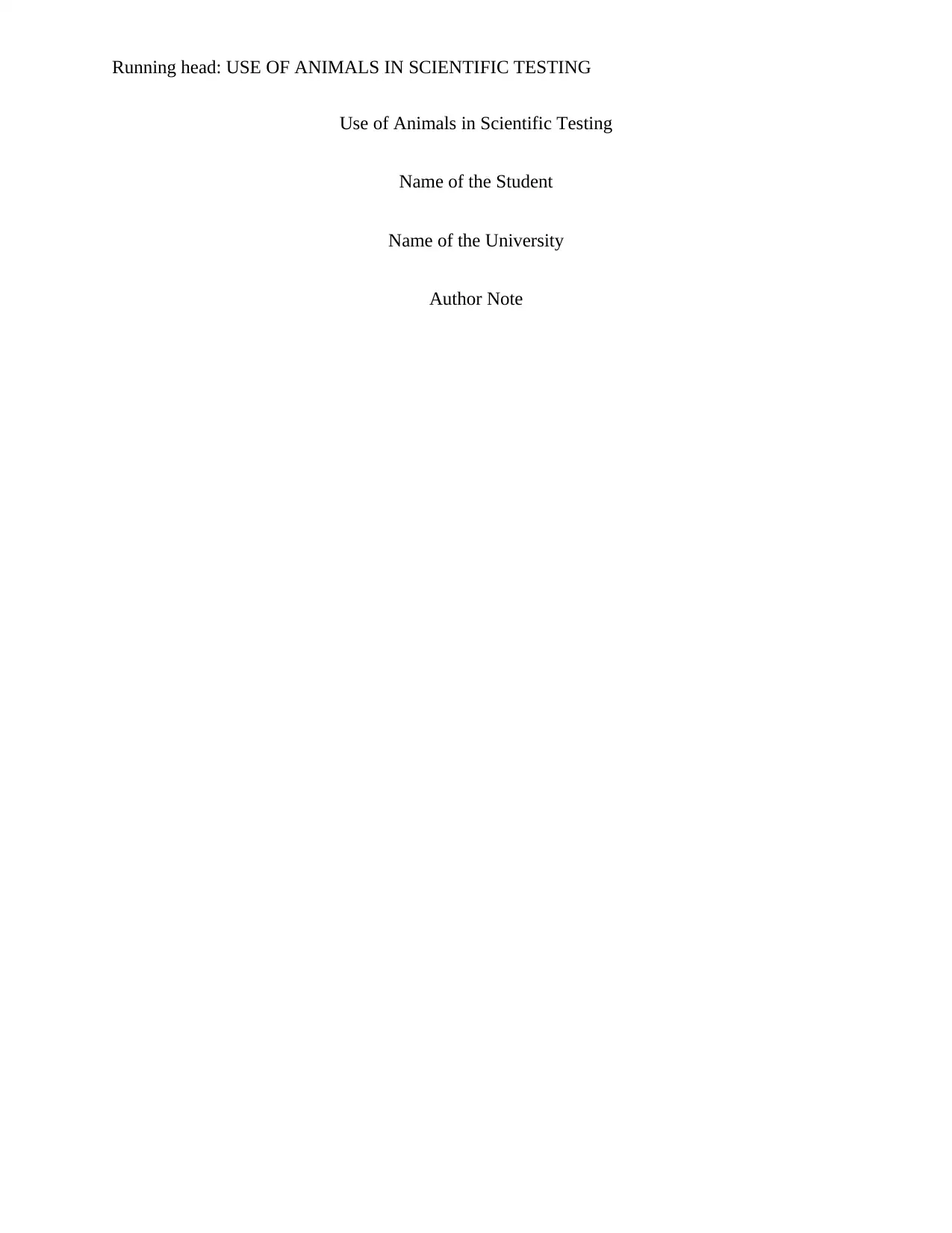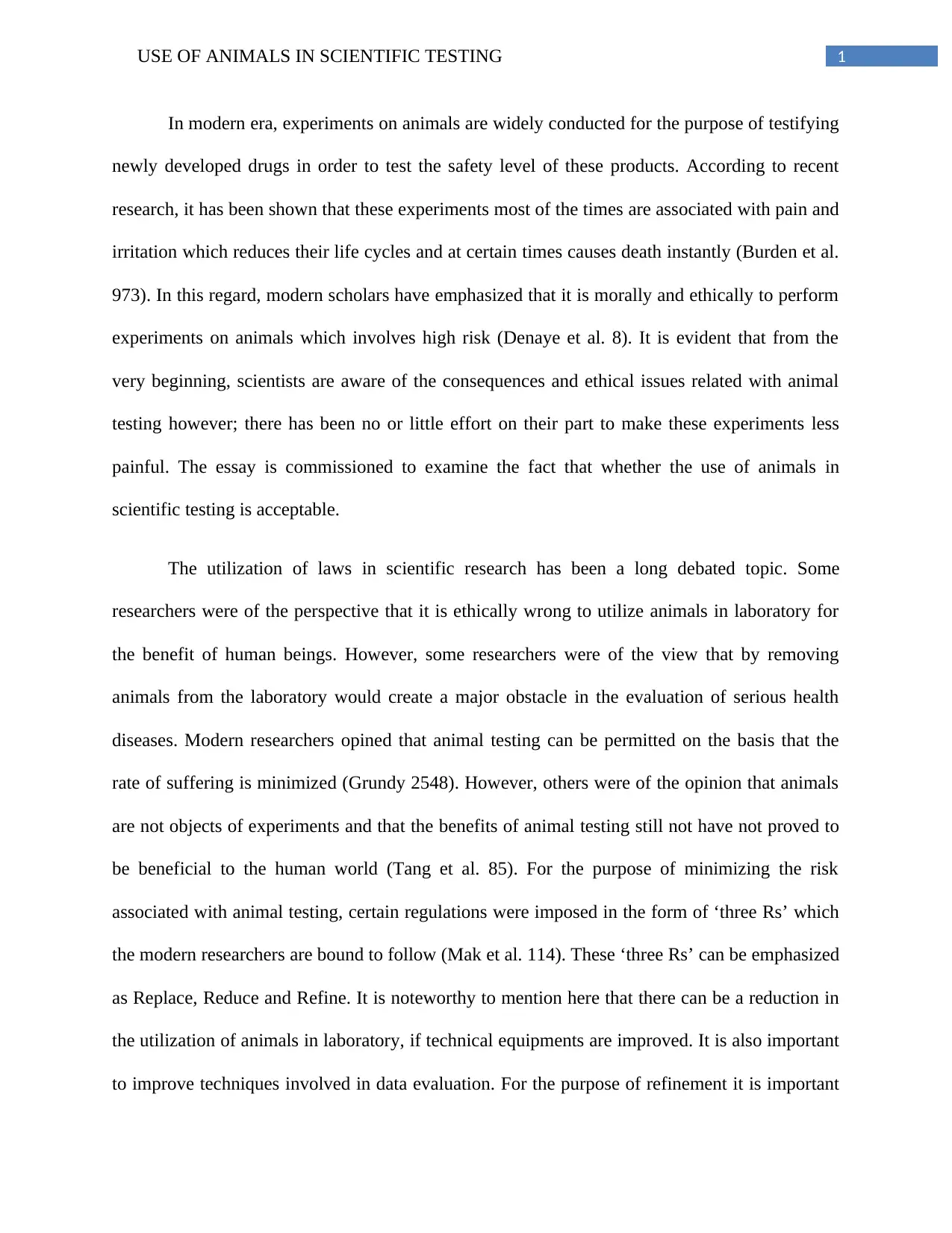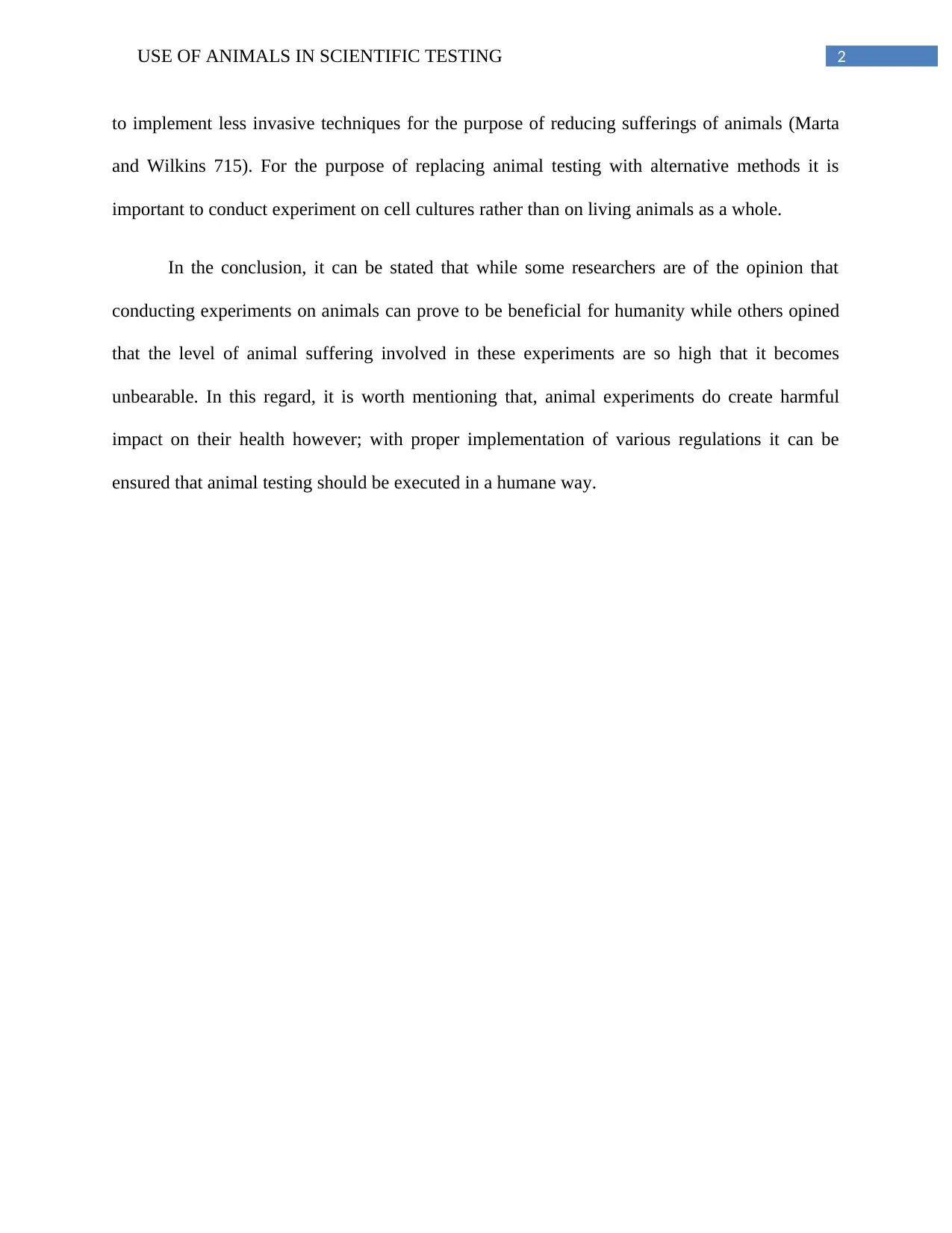A Critical Analysis: Is Animal Experimentation Acceptable Today?
VerifiedAdded on 2023/06/12
|4
|807
|379
Essay
AI Summary
This essay explores the ethical and moral implications of using animals in scientific testing, particularly for drug development and safety assessments. It addresses the inherent pain and suffering inflicted upon animals during these experiments and questions the acceptability of such practices. The essay highlights the ongoing debate between researchers who believe animal testing is crucial for advancing human health and those who argue that animals should not be subjected to harmful experiments. It also discusses the 'three Rs' (Replace, Reduce, and Refine) as a regulatory framework aimed at minimizing animal suffering and promoting alternative testing methods, such as cell cultures. The essay concludes by acknowledging the harmful impacts of animal experiments while emphasizing the importance of humane practices and adherence to regulations to ensure ethical treatment of animals in research.
1 out of 4











![[object Object]](/_next/static/media/star-bottom.7253800d.svg)